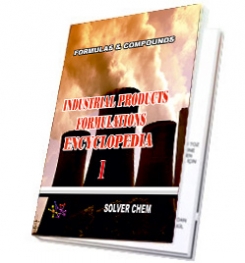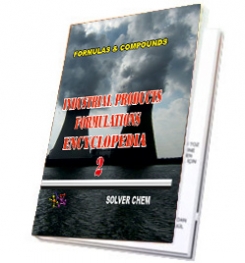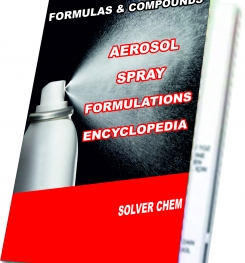Printing pastes are made up of four main components:
- The coloring matter used (dyes or pigments)
- The binding agent
- The solvent
- The auxiliaries.
The coloring matter used can be either dyestuffs or pigments. Dyes are in solution and become chemically or physically incorporated into the individual fibers. The dyes used for printing mostly include vat, reactive, naphthol and disperse colours which have good fastness properties. Pigments are largely insoluable, so often organic solvents are used (such as benzene or toluene). The pigmented printing paste must physically bind with the fabric, so must contain a resin, which holds the pigment in place on top of the fabric.
The binder is decisively responsible for the fastness of the pigment prints during use. The most important fastnesses are wash fastness, chemical cleaning fastness and friction fastness. The handle and the brilliance of the colours are also influenced by the choice of binder.
Binders are in general “self-crosslinking polymers” based mainly on acrylates and less commonly on butadiene and vinyl acetate, with solid contents of approx.. 40 – 50%. (2) Binders made of natural wood resin, wax stand linseed or safflower oils and chitosan were tested in order to obtain biodegradable printing paste. Promising results were reported when using chitosan as a binder, and no solvent was necessary.
Solvents are usually added in the formulation of the thickeners. The type of paste (emulsion vs. plastisol) and thickening agent determines the type of solvent needed. White spirit is a commonly used organic solvent, as is water. The organic solvent concentration in print pastes may vary from 0% to 60% by weight, with no consistent ratio of organic solvent to water. Water based solvents may still emit VOC’s from small amounts of solvent and other additives blended into the paste. The liquid waste material of water based pastes may also be considered hazardous waste.
The most important auxiliaries are the thickening agents. Printing paste normally contains 40 – 70% thickener solution. [3] The printing thickeners used depend on the printing technique and fabric and dyestuff used. Typical thickening agents are starch derivatives, flour, gum Senegal and gum arabic (both very old thickenings, and very expensive today) and albumen. A starch paste is made from wheat starch, cold water, and olive oil, and boiled for thickening. Starch used to be the most preferred of all the thickenings, but nowadays gums or alginates derived from seaweed is preferred as they allow better penetration of color and are easier to wash out.
Hot water soluble thickening agents as native starch are made into pastes by boiling; the colorants and solvents were added during this step then cooled, after which the various fixing agents would be added. Colors are reduced in shade by simply adding more stock printing paste. For example, a dark blue containing 4 oz. of methylene blue per gallon may readily be made into a pale shade by adding to it thirty times its bulk of starch paste or gum, as the case may be. Mechanical agitators are also fitted in these pans to mix the various ingredients together, and to destroy lumps and prevent the formation of lumps, keeping the contents thoroughly stirred up during the whole time they are being boiled and cooled to make a smooth paste. Most thickening agents used today are cold soluble and require less stirring.
Almost exclusively synthetic, acrylate-based thickening agents are used in pigment printing – or none at all, since the mix of resins, solvents and water produces thickening anyway.
AND
PRODUCTION METHODS
TEXTILE CHEMICALS
INDUSTRIAL PRODUCTS
FORMULATIONS
ENCYCLOPEDİA - 1
is enough.

This encyclopedia has many formulations of textile chemicals and derivatives,textile pigment printing paste formulas,silicone micro emulsion preparation,cationic fixator,dispersing agent for textile chemicals,stabilizating agent in textile processing,ion immobilizing agents,hydrogen peroxide stabilizer,sequestering agents in textile chemicals,anti pilling agent in textile processing,cationic softener,nonionic softener,silicone softener manufacturing processes, sizing agent in textile chemicals,organic and organomineral fertilizers for house plants, polyurethane floor coating cleaner formulations,epoxy floor coating cleaner production process,polyurethane concrete coating cleaning detergents, formulations of emulsifier and emulsions,ultrasound gels formula,medical gels manufacturing,ecg gels making,cats and dogs care and cleaner products formulations, aircraft and airport care and cleaner products production,corrugated cardboard adhesive and hardeners resin manufacturing process,glass products,pencil types production,chalk formulations,chafing fuel gel making formulas,kindling fuel gel productions,industrial powder degreaser, industrial fluid degreaser,welding burn marks remover and cleaner products formulas,wood furniture cleaner and polisher formulation,aluminium cleaning and polishing agents formulas,fuel tank cleaner formulations,shoe care and polisher productions,wicrowave exterior cleaner making,concrete care and cleaner products manufacturing,mortar and brick cleaner formula,marble crystallizers production,toilet reservior block manufacturing process,vinyl cleaner and polisher formulations.

All industrial products in the encyclopedia are producible easily. You need no help and no technıcal support. The encyclopedia is enough to produce textile chemicals itself.
INDUSTRIAL PRODUCTS
FORMULATIONS
ENCYCLOPEDIA - 1
is written clear and understandable.
ENCYCLOPEDIAS AND CONTENTS

|
|

|
|

|
|
